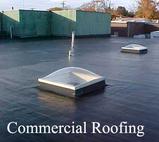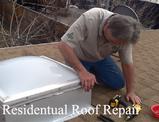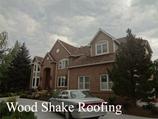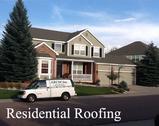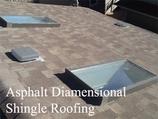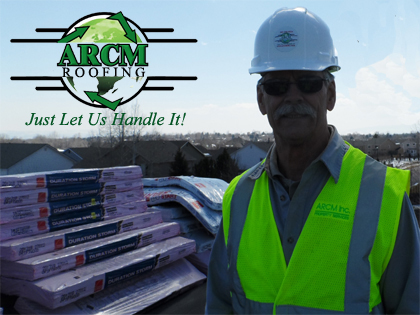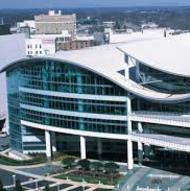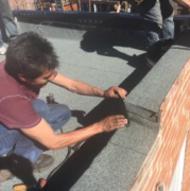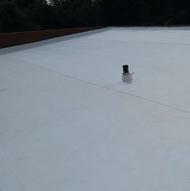FLAT ROOFING
Flat and low slope roofs look attractive on a wide range of architectural styles, especially on modern homes and buildings. Many traditional style homes also have sections of flat roofing, such as on porches/balconies, garages and over shed dormers.
Flat Roof Materials
There are three general types: 1. Single – Ply 2. Built-up 3. Spray-on/paint-on
Single-Ply Roofing
Single-ply means just one layer of membrane as a waterproofing and weather surface. EPDM (Ethylene Propylene Diene Monomer), PVC (Polyvinyl Chloride), and TPO (Thermoplastic Olefin) are the major types of single-ply membranes.Today, single ply membranes are the most popular flat roof materials used in both commercial and residential construction.Single ply roofing is not all equal in quality and longevity. EPDM, TPO and PVC all have very different formulations, durability specs and cost.
Membranes range in width from 6-18 feet. The ones most commonly used are around 10 feet. The average thickness ranges from 45-90 mil. It is typically recommended to install a membrane that is at least 50 mil thick.
Built up Roofs
Built-up roofs are manufactured using built-up layers of either tar-saturated paper and liquid tar with gravel, asphalt, rolled asphalt, or modified bitumen. As the roof is installed, more and more layers are added to increase durability and longevity, hence the name “built-up”.
Among the built-up roofs are: 1. Tar & Gravel 2. Modified Bitumen 3. Rolled Asphalt
Built-up roofs are considered to be outdated by modern construction standards. These materials are almost never installed on large commercial properties, but continue to be installed on residential homes, due to their low cost. Any type of built-up roofing requires a positive roof slope ( at least 1/12 inches).
Spray-on/Paint-on Roofs
There are two main types of spray-on roofs:
1. Spray Foam Insulation (sprayed directly onto the roof deck and then coated with acrylic or urethane coating, as well as a layer of crushed stones/sand.
2. Roof coatings (manufactured for existing roofs and used to extend their service life by 10-15 years). They are typically installed on top of single ply, modified or low slope metal roofs.
Flat Roof Installation
Single ply roofing is either fully adhered or mechanically attached.
Fully adhered method of installation consists of gluing the membrane directly to insulation, or to the substrate.
Mechanically attached method consists of fastening each row of membrane to the roof deck with roofing screws and barbed plates. Fasteners are typically spaced 12 inches O.C.
The most common problem with the fully adhered installation (typically EPDM rubber) is that the seams are poorly glued, there are bubbles in the membrane, and leaks inevitably result.
Torching is used in the installation of Modified Bitumen, and therefore can be a fire hazard to your home or commercial property. In some cities Torch down is not allowed as a roof replacement. If this is the case, ARCM Flat Roofing specialists will build up decking and apply appropriate primer to ensure that your flat roofing does not leak, and passes required city inspections.
EPDM is the most commonly installed single-ply membrane both for residential and commercial applications. EPDM rubber requires no special equipment for installation and ARCM Flat Roofing specialists will handle your project iwth the best time efficiency and manufacturer installation requirements.
TPO is the second most installed flat roof material in US.
ARCM Flat Roofing Installers specialize in single ply roofing to ensure that there will be no leaks after installation. Do not make the mistake of hiring a contractor specializing in sloped roofing (asphalt shingles), who have little to no experience with complicated flat roofs.
Energy Efficiency
TPO and PVC are both considered to be highly reflective, reflecting up to 90% of heat back into the atmosphere. This means that one of these membranes can help you save hundreds of dollars on your energy bills. Both are Energy Star Rated for their cool properties.
White roofs collect a lot of dirt and dust over their lifetime, thereby decreasing their energy efficiency. However, they still remain highly reflective.
Darker color PVC and TPO membranes are still formulated to have light-reflective properties and offer energy savings.
Modified Bitumen and EPDM offer the lowest energy efficiency. In fact, because they are so dark, they can heat up to 170 degrees in the summer, making your HVAC system run over-time and rake up huge energy bills.
ARCM Roofing Inc. 7061 South University Blvd. Centennial, 80122 303-306-8334
Integrity - Honesty - Dependability - Peace of Mind Local - Licensed - Insured - Bonded


